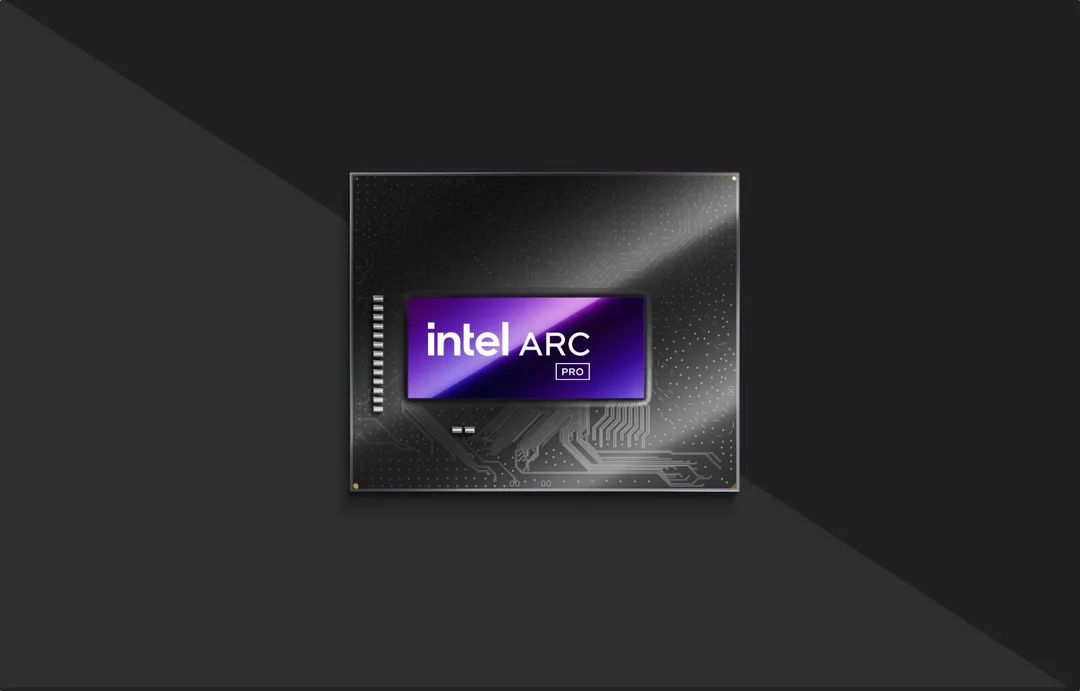
Intel’s Bold GPU Strategy: Battlemage Arc B770 and Pro Series Aim to Disrupt Gaming and AI Workstation Markets
Intel is doubling down on its commitment to the GPU market, with plans to launch the Arc B770 gaming GPU and the Arc Pro B50 and B60 workstations GPUs. These new products signal Intel's intent to compete in both the gaming and professional segments, challenging established players like Nvidia and AMD. The company is hoping its new Battlemage architecture will offer a competitive edge in the crowded GPU landscape.
Arc B770: A Late 2025 Gaming Contender
Despite earlier rumors, Intel is still committed to releasing a high-end gaming GPU called the Arc B770. According to sources confirmed with Tweakers, the card is based on Battlemage architecture and is expected to arrive in the **Q4 2025**.

Preliminary specifications suggest the Arc B770 could feature 24-32 Xe2 cores, a 256-bit memory bus, and 16GB of GDDR6 memory, potentially positioning it as a competitor to **Nvidia's 60-class series** and **AMD's RX 9060 lineup**. While Intel has been quiet about its dGPU plans, this new offering indicates that the company will continue to develop a competitive solution. The reveal might happen at Intel Innovation 2025 in September.
Arc Pro B50 and B60: Affordable AI and Professional Solutions Unveiled at Computex 2025
At Computex 2025, Intel showcased the Arc Pro B50 and B60 GPUs. These budget-friendly workstation cards are designed for both graphics and AI inference, making them versatile options for professionals and small systems.
The Arc Pro B50, expected to be priced around $299, features 16GB of memory and a 70W power consumption, making it suitable for small form factor (SFF) systems. Intel is targeting applications that require decent amounts of memory for running LLMs (Large Language Models).

Stepping up, the Arc Pro B60 comes with 24GB of memory and a higher power consumption range of 120-200W. Intel is also highlighting SR-IOV support, a key feature for virtualized GPUs. The Intel Arc Pro B60 is the x86 gaint's pushign GPUs for both graphcis and AI inference applications. Vivian Lien, vice president and general manager of client graphics at Intel, expects the cards will account for about $500 of the overall cost of a PC.
Undercutting Nvidia with Project Battlematrix
Intel's strategy involves leveraging parallelism by packing multiple Arc Pro B60 cards into a single workstation. Project Battlematrix envisions systems with up to eight B60 GPUs, providing 192GB of vRAM and 1.5 petaOPS of compute. The main advantage here is cost - potentially far less than competing Nvidia solutions.
While individual B60 cards may not match the performance of Nvidia's high-end workstation GPUs, the aggregated power of a multi-GPU system could offer a compelling alternative, particularly for memory-bandwidth-bottlenecked inference workloads that don't heavily rely on sparsity.

Intel is also working on improving its software ecosystem, including the introduction of pre-baked container images for popular AI frameworks, which should simplify deployment and make the platform more accessible.
Panther Lake: Intel's 18A Process Shows Promise
Alongside the GPU announcements, Intel showcased its 18A process with a demo of Panther Lake and showed it running live with Windows at Computex 2025 during a DaVinci Resolve masking demo, signalling progress in regaining process leadership from TSMC.
Intel's latest moves signal a serious commitment to the GPU market. By targeting both gaming and professional segments with competitively priced and technologically advanced offerings, Intel is poised to shake up the industry. Will Intel's strategy pay off? Let us know your thoughts in the comments below.